– Thanks for coming. Welcome to the field trip. We’re going on a hike today. Going to take you on a hike with pictures and in your imagination. I am an avocational botanist. I’m a plant person from day one. Well, day high school anyway. And always looking at plants and interested in them. Any other plant nerds out there? Okay. Not so much garden nerds but wild plants and that sort of thing.
Well, as you can see from our friend Charles Darwin, if you are a botanist or a plant-oriented person, you always have something to look at, which I find wonderful. One of the teachings of many tribes, probably all tribes, is that all plants have a use, literally all plants. And among the Chippewa, the Ojibwe, as discovered by Frances Densmore, who wrote a book about that, literally every plant as some kind of use as a food, as a medicine, as firewood, as a magic love charm, that sort of thing. So I explore that topic, and I have picked up a ton of information over the years, largely through a collection of books. One of the earliest ones was Euell Gibbons. I have a little clipping tucked in this book of mine that says he died of natural causes, which I thought was very appropriate. And, of course, he was famous for advertising Grape-Nuts. He said they tasted like what? – Wild hickory. – Wild hickory nuts.
And he also said that ever eat a pine tree? Many parts of edible. So here’s a little joke of a kid pictured with a pine tree in her mouth. But once you know what is edible, what is useful, a whole world opens up and it’s quite fun. Many of you may know Sam Thayer, who’s Wisconsin’s wild food and foraging expert and has written these three wonderful books. The very first one, on the left, has a chapter on wild parsnip, which I have explored and written about, and he wrote to me and said, “You made a mistake in your article.” So Sam and I have been in touch for a long time, and he’s a great guy. He knows this stuff in and out. So books and people are the teachers. I think I have one more. Yeah, this guy, Ellsworth Jaeger, who wrote “Wildwood Wisdom.” The book is full of these wonderful panels of uses of plants and animal skins and how to build a shelter and many things.
And here’s “Lost,” how to keep yourself from getting lost by knowing which plants tell you which way is north. And that’s actually a topic we’ll get to later. It happens to have been reprinted. So it’s an old book, but you can get it through Shelter Publications. And I encourage you to buy a case of them, you’ll get a nice discount, and give them to your family and friends. I would buy a case for the Boy Scout troop I was Scoutmaster for and make sure every kid had one, and they’re a treasure. I’ve had this one since my high school days. Oh, and a recent book, this is by Misty Cook. She’s Stockbridge-Munsee tribe.
Lives up where I do near Shawano, Wisconsin. And she has interviewed the elders in her tribe and other elders and written a book, a fairly recent book about medicines of her people. And we’ll discover one of those. This is how she hangs and dries many of them. I met her up there. Well, so the field trip idea. We’re going off on a little journey. You have to kind of pretend you’re with me in the field, and I’m leading a field trip. And that’s often how I explore the woods and the fields with people.
And I have a certain way I go about it, and you’re going to have to experience that in a second, because we’re going to pretend you’re with me in the field on some kind of a hike. Which plants can be used for what? Well, I say it’s complicated because think of stinging nettle. It’s a food. It’s a twine plant. It’s also a little hazardous, and you have to know about it. So they’re useful, they’re interesting, they’re memorable. Plants have many features, not just one thing. Not just edible or something else. So we’re going to explore some of those uses.
And here’s what I do in the field. I say, “What is that?” I spend my life, especially in the green season, trying to identify every plant I can, and that’s kind of my modus operandi when I’m out. So I practice the names very year all over again, even the common ones. And the minute I see something I don’t recognize, then I stop and I try to figure it out. What is this? All right, a very common plant. Just about everybody in this room knows it. Common milkweed. Well, what can you do with common milkweed? Besides feed it to the monarchs? It is a food plant, a twine plant, insulation. You can use it for fire starting, the fluffy part. It’s used as a glue because that sap is very sticky.
Magic writing, monarch butterflies, and more. And I’m just going to, I’ll show you in a sec. Here’s a couple of uses. The picture on the right is the young shoots coming up. And if you know milkweed and you recognize it well and your confident in your ID, you can boil it briefly and eat it. It’s quite tasty, and it doesn’t have to be boiled three times like Euell Gibbons will say in his book. So things have been changing in what we know about some of the edibility of wild plants. It’s actually very mild tasting. You just eat it a little bit as it is and it wouldn’t taste that bad.
But it’s better to cook it. In fact, you should cook it. Sort of denatures some of the chemicals in it. The flower buds, same thing. You can eat those, boil them lightly, and they’re just like eating a kind of broccoli. The flavor is very mild. If you’re an aphid, you love milkweed. And you see them colonizing many plants. And so milkweed we could go quite a long time on just that one plant because there are many uses of it by nature, by wildlife and insects.
And what are the ants doing on that milkweed leaf? There’s all these wonderful ecological stories happening out there. They’re taking care of the aphids. They’re basically farming the aphids as livestock for an ant. Aphids eat plants, plant juices. They have to suck in a lot of plant juice to get any protein because it’s sugar water, essentially. And so out the back end comes a lot of sugar water. That’s the sticky spots you find on your cars if you park under a basswood tree in the summer. But the ants harvest that and take it back down to their nest. They also protect the aphids.
So it’s a little sort of protection racket going on there. Okay, so these are the stories that are out there and it’s fun. Another thing that’s fun with milkweed is something I call magic writing. And I’ve taken a leaf and its dripping sap and I’m dabbling it on my hand and it dries invisibly so there’s nothing to see until I take some powdered, some fine dirt or some charcoal and it shows the magic writing on your hand. So try that with some kids sometime. It’s a lot of fun, a little bit of magic. And milkweed fluff. The seed pods were collected in World War II. Anybody have a family member or yourself collecting milkweed.
There’s one back there. When Japan made the island of Java off limits where they had the kapok tree, which has this fluffy stuff they would stuff into life jackets, the call went out to this country to collect the fluff from milkweed. And over the course of World War II, they collected eleven million pounds of it, according to the records. It’s lightweight. It’s waterproof so it’s perfect for that sort of purpose. This is milkweed fluff, a little bag. If you take it and ball it up on your hands, you can make it stay put. Otherwise, you know, it flies everywhere. But 11 million pounds of this? I can’t fathom how they go there.
But I use this for stuffing little pillows, or else it’s a great fire starter when you’re doing fire by friction. We’ll talk about that in a bit. It’s one of the additions to the tinder bundle to help the fire catch. And what’s this? We’re now on our field trip in a little wetter place. All right, most of you know the cattail. And it’s another one that has many, many uses. And between food and crafts and ceremony, they once called it the supermarket of the swamp. And so it’s a useful plant in many, many ways. One of the things you can collect is the pollen off the male part of the plant, which is at the top of the stalk when it’s flowering, and this is an Apache girl, for their sunrise ceremony.
So it’s used by Native Americans for various thing. You can use it as a flower. Sam Thayer’s books and Euell Gibbons, go read up on milkweed and you’ll find out many fun ways to eat it. The leaves, though, are quite useful for mats. Indians in the area where cattail grew, and in this case the Ojibwe, would string leaves together to use as a covering on the side of their lodges, their summer homes, just as a rain preventer to keep the rain out. And how you put them together is you lace the leaves, hang them on a string down, and you use basswood twine or some other twine on a deer rib needle and string them together. Simple enough. The deer rib needle, I made one quite like that one. That’s not me, but it’s one like I made.
It was then polished with that little stick that you all are holding in your hands, or most of you are. So I’ll explain that in a bit. But just to kind of tie some of these things together. Next plant. The basswood or linden. Another one of my trademarks. If you’re on a field trip with me, we would up next to the plants, and we would see how big they are. But I try, in most of my pictures, to put a scale of some sort in there, which is a trick I learned from my botany professor back in college. His motto was, “a penny for scale.” So all of his slides would have a penny or a coin or something in there for scale, so that’s what you’ll see.
If it’s my picture, it probably has a hand or a pencil or a coin or something in there. The flowers are a favorite of the honeybees. It’s one of the three primary honey-making plants in the country. I named my child after this tree. His middle name anyway. It’s Linden. So it’s a tree of great importance to me for many, many reasons. For edibility, one of the great things in the spring when it’s just making puffs of leaves at the tips of the branches, we call it basswood salad, and you can just eat that right off the branch. It’s delicious.
All right, here’s another one. We’re going to move on. We’ll come back to basswood in a bit. It’s in the carrot family. Wild parsnip. How many know of its hazard? All right, you’ve heard of it, but you may not be as good at recognizing it in the field, apparently. But it’s a good one to get to know so you can avoid it. It’s an alien plant. I mean a non-native. It’s spreading quite a bit in Wisconsin and all over the country really.
It’s in every county in Wisconsin. But I got interested in this plant 20 years ago and wrote some articles for the DNR magazine about it and got to learn about it and spread the word about its hazard. But, yeah, wild parsnip. The juice from the green plant on bare skin exposed to sunlight, so it’s ultraviolet light, causes essentially a second-degree burn. And it’ll blister like that and leave a discoloration. How many have been burned by wild parsnip? All right, so you’re outdoors people, that’s a good sign, right? If you’ve been burned by it, once you’ve been burned you try to avoid it more. The picture on the left is me. I call that a controlled burn. Just like when I burn prairies, this is a controlled burn, because I needed a time sequence of the burn development or the blister development for the magazine.
So I sacrificed my arm. It hurts like a burn. That’s how you know it’s different than poison ivy, which itches. And you also don’t need to be allergic to it. Everybody can be burned by parsnip and pretty much is if you get the right exposure. The articles ask for people to send me stories and send me pictures, and I have the best collection of horrible looking burn pictures you could imagine. This is one of them, this is one of my more popular ones because it shows the need for sunlight. Look at the sock line on this picture. So you’ve got a guy who was out weed whipping with a sickle and he burned his legs, but the socks protected him from the sun.
It takes two days to develop, or a day-and-a-half at least. So you don’t even know you have it until a while later. Anyway, long story, read about it if you want more. It is also the same plant as the garden parsnip. Pretty much exactly the same plant. Anybody grow parsnip? Anybody been burned by the plant you grew? You can be. Usually you harvest it at times when it’s less likely to burn you. But any green plant will do it. Any part of the green parsnip. This is one of Sam Thayer’s lessons.
He’s the wild foods guy. He wrote and said, “No, no, I wrote in my article “that it was a wild type of parsnip.” But no, it was the exact same plant. It just happens to be winter hearty and gets away. And people from all over the world, literally, have written to me saying where parsnip grows and that they’ve been burned by it. Sweden, Australia, pretty much most of the states on the east wrote to me over the years. But in the spring, which is that lower left picture, or in the fall is when you normally harvest parsnip, kind of when the roots have been formed by that first year of growth, and that’s when you harvest it. A topic of interest to me over the years has been twine and fire, and I kind of combined the two together in many ways. Back to the basswood tree, it is one of the best twine plants, probably the main one used by Indian tribes anywhere where basswood grew. And this is what the bundle looks like when you take the inner bark, when you’ve rotted it away from the outer bark, and you get these wonderful ribbons, a whole tree full of them when you harvest it properly.
And the picture on the right shows the bark and the fiber together. Essentially, you strip a tree in the springtime, late spring, when the bark on all trees peels off of trees, kind of like the skin off a banana, tie it up, put it in water, wild water somewhere, for three weeks and then you take it out and wash it in some more water. It gets kind of slimy, but what happens is it rots the inner bark away from the outer bark and into ribbons. So each of these ribbons is an annual layer of inner bark as the tree grows. So the bigger the tree, the more of that inner bark you get. And the basic idea for twine making is you twist– I’m going to demonstrate with this. But you twist it together, and you bring, the top picture shows how you twist the fibers, bring them together, and you get a kink in the middle. And then you keep twisting and the magic happens. And you can literally make anything with, make twine from anything that has any kind of fiber.
So here’s just a, when I demonstrate at a distance, I use a big piece of sheet or rag or something. But you take the fibers and you twist them together and you start getting that twine. And then you can hook that up on something and keep twisting. The native women would roll it on their thigh and back twist it. So you get that kind of twist one way, roll the other, and you get the twine. So I encourage you to try that with any fibrous thing, and see if you can make it turn into that two-stranded twine. For extra credit, figure out how to do three-stranded twine. This is easy once you figure out the two-stranded. This is a– I’ll show the plant later– but this is a rope I made from the– In the case of this plant, it’s the fibers on the outside of the stem, which I show a picture of, and it’s 100 stems of wood nettle.
And if we’re on our field trip, where does wood nettle like to be? Besides in the woods. It loves river bottoms. It likes wet. And so the best plants are found along the Mississippi bottoms and the Wisconsin River. And these plants will be this tall, and this is 100 stems of the best ones I could find. It’s 30 some feet. And this is strong enough to rappel on. Over the years, I would experiment with plants, which ones make fiber. And so here’s a sampling from paper birch and an agave from Florida.
Mayapple has a fiber in the stem. Who knew, but I tinkered with it and out comes the fiber. Corn husks, if you do them right, the lower edge of a cattail plant, cattail leave, has a skinny little fiber, and you can take that. It’s about a foot-and-a-half long. And there’s the best fiber in a cattail, but you have to tinker, you have to mess with it. And some more twine plants. Which one is this? – Marsh milkweed. – Marsh milkweed or swamp or red milkweed. So we’re wandering in the wet again, or near wet, to get this plant.
A wonderful garden plant, but it has one of the best fibers in it too. Also a common monarch plant. I found many a caterpillar on that. And this shows you how the fiber comes off plants like nettles and like the milkweeds. It’s on the outside. So when the plant is dead, or even if it’s green, you can peel the fiber on a mature plant off the outside. Often best after its winter killed, so when it’s dry. And these fibers then can be kind of rubbed in the hand and may lose some of that chaff on the outside and then twined. Another one.
This is maybe a little less common. The plant is very common, but you may not recognize it. It looks a little like milkweed but it’s not. It’s dogbane or Indian hemp. There’s a couple different plants, and they all have the fiber. So they’re one of the better fiber plants. Not edible. And they can be a lookalike to milkweed in that spring shoot stage, so you want to be careful if you’re going to be trying to eat these things. Twine is okay.
And here is the wood nettle in its woodsy form. That’s the way you eat it in the spring when it’s young like that. It’s delicious cooked, boiled just a little bit as a spring food. And, again, you wait until the fall for that tall stem to be ready for harvest. If ever you are told nettle is a good fiber plant, this is the one you want because the fibers stay together in the full strip. Whereas the stinging nettle they tend to break into smaller pieces. All right, thinking of fire, shifting gears a bit. Actually, this is fire and twine, now that I think about it, first, what plant is it? Does it grow in Wisconsin? It does. It grows in gardens beautifully, but there’s a few places where it’s gone wild.
Although, we think it’s not native here. It’s native in Illinois, this particular one. Where it grows, it seeds itself, and you get lots of leaves, which are wonderful for fiber. And the stems then are usable for fire-making. Fire by friction. The bow drill, you’ve probably seen the idea. You have a piece of wood down there in a camp and a drill and then the bow makes the spindles spin around. And the old books will say yucca is one of the more common firewoods. But what do you use on a yucca? They never explained it in the books.
More modern people have explained it, but some of the old books didn’t. But it’s the stem. I’ll go over here and get one. This is what the stems look like. And they are hard and woody in there. And I’m going to show you… how to make fire with yucca. I would normally use a bow drill, but it’s very hard to demonstrate standing up. So I put a piece of yucca in the tip of this drill, and I’m going to spin it on this spindle, or on the board down below, and see what happens. Okay? [drill whirring] Can you all see what’s happening? [drill whirring] And pretty soon you all be smelling it too.
It’s a very nice woodsy smell. What’s falling onto my paper is black powder as the two woods grind each other into powder. And that powder gains enough heat to catch, to make a spark, to ignite. And then that spark you put into tinder, blow that into a flame. Anybody done that? The old fire by friction trick? Yes, my fellow who was helping me set up, we’re both Eagle Scouts and we learned it back in the day. But it’s a great skill to learn. It’s really reaching back into time to know how to make fire with what you have available. This is yucca. This is basswood.
Which is that wood again we were talking about, so it’s a great base wood. We often use the same wood for the spindle as the hearth. Yucca tends to be like cheating because it makes fire the best, and now we know why and why the books talked about it. Here’s another fire story. Who knows what this is? Found on dead birch trees. Sometimes living ones or aspens. I found it on beech. Up by where I live there’s beech trees. Does it look a little like a horse hoof to you? [chuckles] And that is one of its common names then and is the horse hoof fungus; it’s very hard and woody.
Here is an example off the tree. It grows on the dead wood, so it grows a little bit every year. So this is sort of an older one. And what’s the fire story? I have one more slide to show what it’s like on the inside. It’s very sort of fibrous with tubes but hard. Here’s what it can do for fire. I’ve got a piece of it cut and a lighter and I’m going to see if I can get it going. All right, can you see that little bit of red in there? It may be hard to see. You can see the smoke, but it’s lit now. It’s like a punk, and it will burn until this is gone.
And it will not go out very easily. And I’ve got to be careful now, because what am I going to do with it? But this was a way, it was called the fire tinder or the tinder fungus, because mushrooms and fungi are spore-bearing. It has traveled the world on the winds, and so this fire is found in the north of the whole world. So in Sweden and in Russia, this is well-known by the tribes there as the fire carrying fungus. And if you move from camp to camp, it’s a lot easier to bring one of these along, to light one and put it in a basket or a pot or something and just let it smolder. And you take your tinder and you blow it into a new flame. So it just saves you a lot of time, but it’s a wonderful little trick. So on our field trip I would knock one off the birch or have a piece in my pocket and light it to show you. It’s one of the many fire stories that are out there.
All right, where are we going to go next on our field trip? Oh, here we are. We’re back on dry land. Who knows what this one is? It’s a non-native weed. – Mullein. – Mullein. And a beautiful yellow flower on a spike. A couple uses. One is for insulation. Because it’s fuzzy, you can put it inside a shoe, they say, I’ve actually never done this, but you read about it being used as an insulation as it kind of traps air.
But the other is that stalk in the fall. You can harvest that, strip it down, kind of peel it, and you get a long stalk that then you can use for fire this way. You kind of roll your hands down into the board. So it sits on the board, and you use your hands to spindle it down on that board. And if you’re good enough and it’s harder than the drill, the bow drill, you can make a fire. So it’s a useful weed. And now a little section on just wild edibles for variety. Who knows this one? We’re now walking through my garden. – Lamb’s quarter.
– Lamb’s quarter, yeah. A common garden weed. Edible raw, the leaves. Edible cooked like a spinach. Very, super nutritious. In fact, most of these wild greens are high in vitamins A and D and many with C, K, so they’re vitamin rich, many wild edibles. So, they actually can make a good addition to a diet. You can read about each one online and find out which are particularly good. The seeds too, these seed heads make a million tiny seeds and you can cook them into a mush.
But they’re just microscopic and they’re hard to process but it’s doable. A non-native, it came from Europe. As did this one. Purslane. Yeah. What’s it like when you eat it? Crunchy, you said? It’s also a little on the slimy side. It’s mucilaginous, which is just it’s character, but that’s how it is. I mean, it doesn’t taste bad or anything, but that’s how you know for sure it’s purslane. And you can this raw in a salad, eat the whole plant, or cook it down, again just like most greens. How about this one? All right, this is well-known to people as a meadow plant.
Again, it’s a non-native. Queen Anne’s lace or this indeed is the wild type of carrot. So if you dig one of these up, what do you get? A little carrot. A little tiny carrot. But not when it’s flowering. Of course, by the time it’s flowering, it turns to wood. So if you want to get your little carrots, you have to dig it up when it’s a rosette of leaves on the ground, just like a carrot in the garden. Little red circle. What is that? It’s a little red floret in the middle of a Queen Anne’s lace, and hence the name, that bit of royal blood in the middle of a Queen Anne’s lace flower, not on every flower but most of them, is the sign of a Queen Anne.
It shows the sign of the royal blood on that flower. So, again, one of those little stories you tell in the field when you’re exploring the plants and trying to make them memorable. And all plants not only are useful but they’re memorable for their own features. I had a chance to dig some up last year in a garden that had seeded in with them, and they were in nice, deep soil. So I got a wonderful pot full and had a nice meal out of them. And what do they taste like? Carrots. And that’s how you know. Just as a caution, those of you that know the carrot family, it has members like poison hemlock, which is an invasive weed which is coming into Wisconsin which will kill you in a hurry. It has water hemlock, which is a native which can also do you damage and do you in.
And some other ones too, so you really have to know your carrot family plants. As a rule, I should have said this at the beginning, but whenever you’re talking wild edibles, first rule is? Know what you’re eating. Really know what you’re eating. Don’t say maybe this is wild carrot. The beauty of wild carrot is it smells just like a garden carrot and nothing else does. Here’s an obscure one, a vine. Hopniss. And that’s a name that’s getting around these days. Apios, did I hear someone say that? That’s it’s genus name, but also called ground nut. We’re now in the wetlands or in a wetter area, maybe on a stream bank, on our field trip.
And so I have my spade along. And out of the ground will come this string of tubers or swellings along the rhizome or the root. I’m not quite sure what botanically you would call that. Cut them open and there’s this beautiful little potato in there, white and not even stringy at all. Well, a little bit stringy. And that’s the batch cooked. So I peeled them and cooked them and they taste very mild, like potatoes, and they’re four times the protein of regular potatoes. And they’re grown in Japan as a farm crop. You know, they’re probably cultivars that have nice, big tubers, but they’re so productive that they’re actually grown in some countries.
Our plant in other countries being grown. Now, here’s a controversial one. What is this? – [inaudible] – Nightshade. Which one? – [inaudible] – There’s a couple of them. I heard the word “deadly.” That’s what we’re going to talk about. This one is the black nightshade. Very, very common garden weed. Classic tomato family flower and fruit. So your kind of at home when you see a plant like that. You recognize it pretty well.
The berries turn black like that. They start green and then they turn black. Edible or not? Very edible but people call any nightshade deadly nightshade. None of them are deadly, by the way, even the other one that has the red berries. It’ll just make you throw up maybe, if you eat enough of them, but they won’t kill you. But they’ve got that name, and part of it came from the fact there’s a plant in Europe called belladonna which will kill you, but it’s not here heartily, maybe in some parts of the east. And the berries look a little like black nightshade but not much. So, again, if you know enough about the plants you think you’re eating that are okay, you can be pretty confident eating this. And the berries, some people call them garden huckleberries.
So what would be in a name, if we had a name change on this plant, what would that tell you? That this plant is as edible as anything like a huckleberry. And so it’s a plant that’s gotten a bad rap over the years. But the greens are edible, cooked. Sam Thayer goes on and on in his books about it. And it’s eaten by millions of people worldwide. It’s actually a worldwide plant. It’s a weed that I think is native here, in part, but it’s also native to Eurasia. And, again, eaten by millions of people. And yet, in this country, it got the name nightshade, it got the name deadly attached to it. Uh-uh, it’s not.
– What part do you eat, and what does it taste like? – Well, what part do we eat, and what does it taste like? The greens taste like a cooked spinachy, greeny thing. I found them just fine. Nothing bitter about them. And the berries have a sweet taste, like a little ground cherry. If you know ground cherries, that’s what they’re most like. So they’re sweet. But eat them only when they’re ripe, says Sam. So I only ate them ripe. And depending on your garden and if you let the weeds go, you can get a lot of them. [laughter] So here was my backyard last summer.
All right, moving on to a whole different kind of plant, although a cousin of the fire fungus. If you’re lucky to find patches where a whole bunch are together like that, you’re in luck. So these are the morels, morel mushroom, which is one of the more popular ones. I have a picture with lilac in it to show how I use other plants to tell me when things are ready. So when I see lilacs blooming, then I know it’s time to go to my morel area and start looking there. And that’s true of many kinds of plants and harvest schedules. When I hear the toads sing, then I know it’s also morel season. When the first toads begin singing. So I connect different parts of nature to help me know what’s happening where.
Get too many? You have to dry them. So they dry well. They’re delicious. Feed them to your friends. Another very popular wild edible, we’re back in the woods on our field trip. – [audience murmuring] – Often called ramps. Another name is? Wild leek. The leek tells you they are the onion family, and if you rub a leaf and taste it, you’ve got a very oniony kind of thing. Anything that tastes like an onion out there probably is one, in the family, and all of them are edible.
The lower right picture shows what happens in the summer. The plant disappears into the ground. The leaves dry up and go back to their bulbs. You can see the bulb in the upper right. And then the flower stalks appear later. So you don’t even know you have wild leek or ramps in your woods, if you happen to catch it in the later summer like this. So getting to know plants in all seasons lets you know them better and harvest them better. Wild leeks and ramps, one of those plants that if you take them all, there’ll be none left. So you need, like with many wild foods, is to harvest selectively so you don’t clear the population.
And put the seeds back, only take a few plants. We don’t need them to live, so it’s better to have them out in the woods. A few other caution plants or hazard plants. Which one is this? Okay, this is back to our friend stinging nettle, which is the most common of the nettles. And the stingers are quite obvious on that picture on the right. But it’s also a wonderful food to eat when it’s young in the spring and covered with needles. So what happens? How does that work? Well, if you take, if you cut them a couple inches to a foot, depending on your tolerance for a little bit of stringiness, you put them in a little boiling water, just enough to soften them, then they’re edible and you won’t get stung because those needles are not like thorns. They’re not woody. They’re not hard.
They’re essentially a cell full of poison, or at least an irritant, and they’re like a little hypodermic needle that they just jab into you, and that injects the fluid and you’ve got it. That doesn’t last that long. When I teach about wild plants in the field, or poisonous plants, I’ll actually pick one of those and say, “Who hasn’t been stung by a stinging nettle yet?” And rap them on the hand a couple of times until they feel the sting. And then we watch the little red bump come up and the itch and, you know, about an hour later it’s gone. I always do myself too at the same time just to be fair. But it’s one of those plants that is harmless enough, unless you’re running through it in shorts. Probably a couple of you have a good story about way too many nettles. [laughter] But that happens. Again, it’s got fiber in the stem. It’s not as easy to get at as some of the other ones.
How many are allergic to this one? I am. Okay. But first, what is it? – [inaudible] – This is one of the two poison ivies we have in Wisconsin. One of them is kind of low and viny, the other one can climb to the tops of a tree and make bushes, essentially. They’re a head high. White berries is one of the indications of it. If you see something that white berries, be careful. And, again, it’s an allergy. You have to have touched this plant once, and then you touch it the next time is when you develop the allergy. About 50% of people get it on that second touch.
And the lucky 15% of you out there who will never get it no matter how many times you touch it, you are the lucky few. But it’s part of our genetics that only so many people will get it. Allergies are like that. And this plant? Yeah, this is a plant called jewelweed. Beautiful. Very fleshy stem. There’s two kinds in Wisconsin: yellow and then this orange kind. The word down there says the antidote. How many people have used that as an antidote to poison ivy? Does it work? – Yes.
– How do you know? – [inaudible] – And it worked for stinging nettle he said, yes. So this is an antidote used for stinging nettle and poison ivy. What I challenge you is if you’ve ever tested, done a controlled test. Meaning nettle on both hands and juice one side or the other, or poison ivy the same thing. The scientist in me has to experiment that. It’s like that parsnip, I had to test it on myself. But seriously, I’m just wondering if you could use water or you could use anything that’s juicy. This plant happens to be easily crushed into a little poultice because it’s very fleshy and full of juice. But I digress.
There are often antidotes to help with the problems that you encounter in nature. And native tribes were really good at that. They knew what was usable for healing things. And now just kind of to close out, I’ve got a bunch of odds and ends. On our field trip we’ll stumble across things. We may not have been looking for wild foods, or we may have been but we’ll come upon other things. I’ll ask you what these are. Who knows this one? It’s in a wooded area. It’s a forest floor, deciduous woods.
It’s large-leafed or big-leafed aster. Okay? How many folks have been in the woods and didn’t have an outhouse nearby and needed a little TP? [laughter] All right, anybody ever use this one? My Eagle Scout back there says yes. So when you don’t have what you need out there, you look for the plants that are the kind that are good for you. And this one then, because of its usefulness, those nice big leaves, has a wonderful name. [laughter] A wonderful folk name. Here’s a little bit of folklore for you. So next time you go in the woods and see this plant, remember it’s the wipe aster. Okay? In case you need such a thing. Here’s a bit of magic. First, what is this plant? It’s a shrub.
You said doll’s eyes, but it’s a woody shrub. Similar to the doll’s eyes plant, which is a poisonous plant. It’s a dogwood. I don’t, it’s gray dogwood, but immaterial because of what I’m going to say next. So dogwoods have pairs of leaves, opposite leaves, beautiful venations in the fall. But if you know the magic, you can take a leaf and break it in half and it levitates. The bottom half will levitate and stay close to the top half by magic. You can see that. Okay. I heard somebody say fibers.
Well, if you look closely, you will see these little white strings that come out of a dogwood leaf. But if you pull it just the right way carefully, you don’t break the strings and you hold it up against a white background and you amaze your friends. [laughter] All right, so this is what’s cool about nature. Here’s a common plant. Who knows? Heard the word bee balm, but it’s also the bergamot. This is the native. Monarda is the genus of both of them. But it’s the wild bergamot in this case. Our prairie, one of our prairie plants. What family? It’s a mint.
Square stem. We talk about that on our field trip. We’d show that. You’d roll it in your fingers. What is this used for? Tea. Oh, you could use it as tea as it is. But what about Earl Gray tea? No. All right? So I’m going to make sure all of you get this. It is not the flavoring for Earl Grey tea.
Same name, you’ll read it on the package. It says bergamot, but it’s a citrus plant. The bergamot of the common, it’s a problem with common names. Bergamot means this citrus and it also means this wild plant we have here. So the flavoring in Earl Grey is a citrus. Okay? So next time somebody says here’s the bergamot plant for Earl Grey tea, you set them straight. [laughter] All right, I’m counting on you. It’s also a widely used medicinal in many tribes. In this case, I live in Shawano, right at the bottom of the Menominee reservation, and there’s another tribe next to it, the Stockbridge-Munsee, and that woman who wrote the medicine generations book, this is one of her pages. They call it number six.
Everybody up there calls it number six. They don’t call it bergamot. So here’s one of the common name things. Her elders say either it has six uses or it was the sixth plant their people discovered as they learned the medicines. But she cuts it when it’s in full flower, hangs it to dry, and uses it all year for coughs, colds, flus. The dried stems can be smoked to help clear the lungs and nasal passages. I don’t know how smoke can do that, but I guess it does. I mean, that’s part of their folk wisdom on medicine, so I have to go with that. In her book, one of her elders, Dave Besaw, said, “Number six will make you feel better “and take the aches and pain out of you.
“It has aspirin effects. Good for pain relief. “You take number six, you go to bed and cover up, “and when you wake up, you’ll be feeling better.” That’s probably true no matter what you do if you’re sick. But, again, the elders have the knowledge, that ancient knowledge that they teach, and not as often as we like, that teach the younger people about these wild plants and what they can do for us. Another odd plant, so to speak, or odd use. This is balsam fir. It has these flat needles, especially down low where it’s shady. Christmas trees, wreaths, that sort of thing. But on the bark are these blisters.
What’s inside of those blisters? Anybody ever pop one? Full of sap, a very clear but sticky sap. It’s the only tree that does that. And it was used in old times as a sealant for microscope slides. It would like seal them down on a piece of glass, the coverslip on the glass, so it had that historical use. Misty Cook, as a medicine of her tribe, uses it to pull slivers out. So she puts it on there, covers it with a bandage, and you repeat that process until the sliver comes out, she says. It’s also good for like a natural ChapStick. And it kind of seals like Vaseline. You know, Vaseline is a wonderful healing thing for keeping wounds closed; this stuff could do the same.
But you poke it a little bit and the sap comes out. In the summer, it really runs out, but you can get this any time. I’ve been using it lately to make little scented packets, sachets or sachets. That’s the Christmas tree this year after I’d had at it with my nippers. [laughter] And I dried the balsam and let them dry out, and then you strip them and your friends can help you strip them too. I taught a class in this, and we stuffed these little bags with this stuff, with these needles, and used a little funnel to fill them. I made the bags ahead of time, then we sewed up the edges. And they smell like balsam for decades. They really are wonderful smelling things.
It’s an old-timey kind of folk craft for having nice smelling things in the house, but a great use. Ah, now we’re finally getting to the sticks in your hands. This is what you’re holding, if you can still have your piece. What is it? Horsetail or scouring rush. In this case, this one is more commonly called scouring rush because it’s the big one. There are other kinds of horsetail in that same group of Equisetum. Equi for horse, setum for hair. So the horse hair or horse tail. And the outside of that, and this is what I want you to do now with it, is it has silicate on–.
Somebody is trying to blow on it. Yes, you could make a little whistle. I never thought about that. [whistling sound] Thank you, you taught me something. [laughter] But what I want you to do with it is take it and rub it on a fingernail. Now those of you who have painted fingernails, it might be easier. But you’ll notice the silicate. It’s like a little bit of sandpaper. And you will see little white powder build up on that. If you have, I see you have a watch on your hand.
If you take that watch and rub a little bit, like on the back side where you won’t see it, it’ll polish that to a fine polish. This was used, these bundles of rushes, as a scouring pad for pots and pans and for polishing things. And back to those cattails mats where you make that bone needle out of a deer rib. I’ve made one. Shines it up beautifully. Here’s a, I have a picture up there, but this is my letter opener made from a deer leg bone. And the shine is completely polished with horsetail. And it’s just that fine of a sand. It’s like the 400 grit or better sandpaper you could buy.
And it makes things shine. Racing toward the end here. What have we got here? The plant or the leaves and the berries on the right will give you a clue, a pretty good clue. It’s in the cherry group. This one happens to be chokecherry. Black cherry and chokecherry are a couple of the wild cherries. And they develop this fungus on the branches. It’s a native fungus called? Poop on a stick. [laughter] Or black knot, yeah, that’s another more boring name.
But here’s poop on a stick. So you tell that to kids, they’ll never forget it. But they will also remember that’s a cherry. So it’s a good field ID thing. Cherry has a beautiful smell if you scratch the bark. It’s also poisonous. You’re not supposed to cook hot dogs and marshmallows on a fresh green stick; there’s arsenic in there. If you cut your cherry, pruning it, throw it in the cow pasture, and the cow eats the wilted leaves, it will die. And that’s documented a lot.
So cherry has its issues, but it’s also an edible fruit, a wonderful, beautiful wood. So, very useful. What are these? I’m going to go quick here. Stickseed. These are the things you get all over your clothes in the fall, or even now. Favorite plant. Extra credit. The one on the left is white aven. So many hitchhiker seeds, and it’s kind of fun to get to know them so in the fall or whenever, you come home with all these things, you wonder what they are, you can identify the plants from what you took home with you. But you can also make some fun with it, and you can use it to write stuff.
So there’s an example of stickseed writing. What’s this? This is the wild or the bushy juniper that we have. It’s a native bush in Wisconsin. Grows, likes dry places. Used for? Gin. It’s one of the flavorings of gin, grown in Door County, or actually Washington Island where these plants are. They harvest it there and use it for the Death’s Door Distillery for gin and other things. Favorite of many people, what’s this? – Catnip. – Catnip. What’s cool about that? Makes cats nuts.
[laughter] I love putting catnip by cats. All right, the last slides are these. These are some aspen trees up north in the winter. You know the old you can find north from mossy trees? Well, in this case, these were particularly good tree compasses, as I was calling them. The north side, the right side, the band of moss goes way up high, then on the south side. And you can see with the compass due north and due south, where the bottom of the V is the driest part, the top of the green for north-facing. And dead center on the slant line is east, or west, depending on what side of the tree you’re on. But I just find that fascinating; I got to know those trees better and better. Not every tree, in fact very few were this good, but enough trees now have moss in just the right sort of way that I can tell where I am, more or less, which way is north on a cloudy day with the right moss and the right trees.
Good thing to know. And my last fun and games project of my life these days is sticks. I’ve been doing a lot of things with natural shapes of sticks. I won’t have time to have somebody throw these rings at me, but this is rustic ring toss. [laughter] You can throw it on there. You can put a stick in the ground and throw it. I’m working on an educational project of plant willows and other things that you can grow and cut and regrow in schoolyards, kind of as a way to extend the school farm idea, school garden idea. And then all the things you can make with sticks. And a couple ideas there.
Sam Thayer, a little quote from his latest book, “Earth’s wish to be clothed and rambunctious greenery “and to know that greenery as a friend “makes either place look more like home.” And I’m just encouraging you to remember that plants are your friends, and getting to know them is like getting to know people. Everybody here looks a little different, has different characteristics. You wouldn’t be happy just to know names of people. You want to know more. And sort of that’s what this is all about in my mind, is learning about that more on plants and all the things they have to offer. You then, you people and me are the keepers of these traditions of how plants can be used, what is cool about them, how they’re memorable and can be eaten. And as one of my teachers once said, and I’ll demonstrate with twine here, he held up a piece of twine that I had made, actually I was teaching twine for him, and he held it up and said, because he was Cherokee, and he said this thread of culture is passed down through generations. His family were potters. And it’s so easily cut that in one generation we’ll lose the talent or lose the skill of how to make twine out of wild plants, which ones to eat and that sort of thing.
All that lore, all that knowledge is lost in a single generation if that thread is cut. So I leave that image with you, just to think about the things you know, the skills you know, and how they are kept alive through time because you’ve kept them alive and you’ve passed them on. If you will, send me stories at [email protected]. And I think you for coming, and I know you’re all looking forward for the green season coming and we’ll have a great time this year out in the woods and fields. [applause]
Search University Place Episodes
Related Stories from PBS Wisconsin's Blog

Donate to sign up. Activate and sign in to Passport. It's that easy to help PBS Wisconsin serve your community through media that educates, inspires, and entertains.
Make your membership gift today
Only for new users: Activate Passport using your code or email address
Already a member?
Look up my account
Need some help? Go to FAQ or visit PBS Passport Help
Need help accessing PBS Wisconsin anywhere?

Online Access | Platform & Device Access | Cable or Satellite Access | Over-The-Air Access
Visit Access Guide
Need help accessing PBS Wisconsin anywhere?

Visit Our
Live TV Access Guide
Online AccessPlatform & Device Access
Cable or Satellite Access
Over-The-Air Access
Visit Access Guide
 Passport
Passport







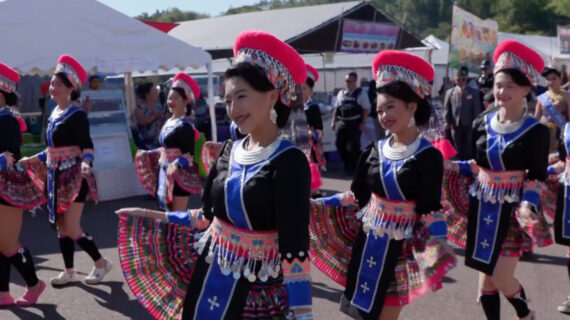
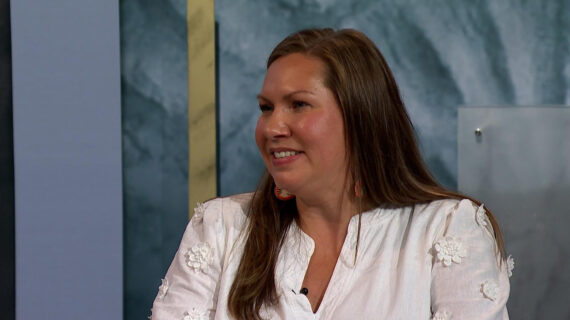

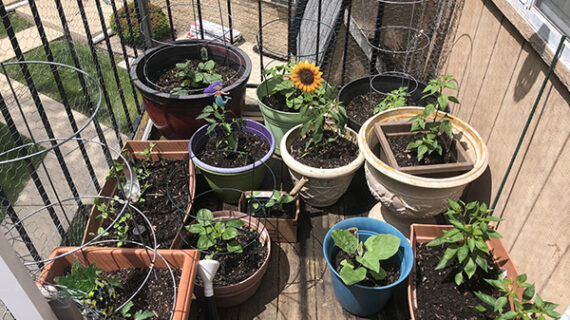

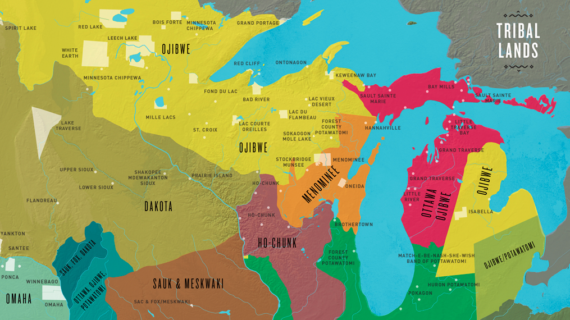

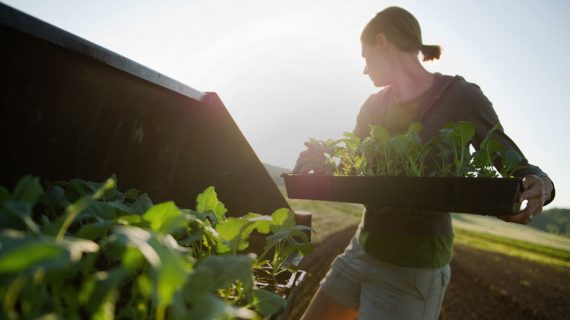
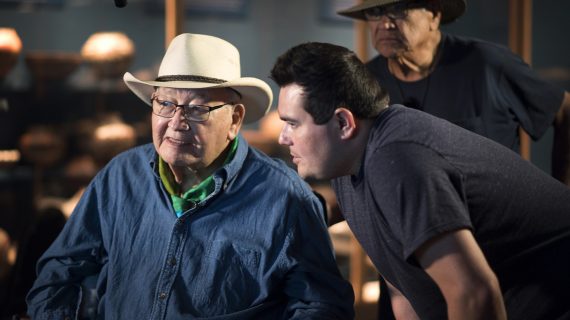


Follow Us